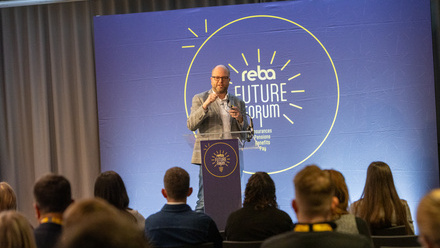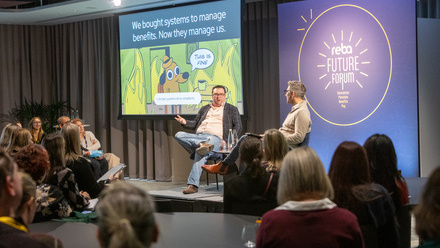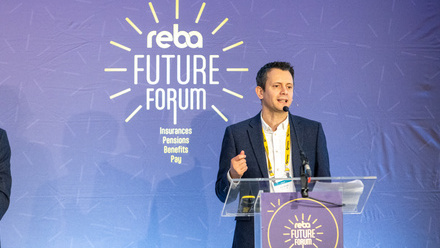We’ve never needed great benefits technology more than we do now
For more than 20 years I have been working in the employee benefits industry. The perfect storm of several factors converging since 2019 means I don’t think there has ever been more need for employers to invest in employee benefits technology.
As a direct result of the growing expectations people have of employers, several generation-defining events and the fading of traditional support mechanisms, organisations are demanding more from their benefits technology. The pull of these requirements is now so strong that we are seeing benefits investments reaching the top of the priority list for America’s top chief executives this year.
In 2023, The Business Roundtable (an association of more than 200 leading US employers) redefined its statement of purpose. In an agreement to put employee interests on par with shareholder interests, the number one thing on their list is ‘investing in our employees’.
The roundtable says this starts with providing them with important and much-needed employee benefits. The reasons organisations offer benefits at work are more far-reaching than ever before. This change marks a significant milestone in employee benefits history and illustrates the growing need for organisations to invest in employee benefits technology. Part of this is because the reasons we offer benefits at work are becoming far wider than ever before.
A wider remit for benefits
Driven by the demand for more and better wellbeing support in the workplace that came from the Covid-19 pandemic, we continue to witness an employee benefits renaissance. Among the most sought-after benefits globally, good health benefits now top the list. Among Benefex customers last year, the top eight global benefits were all wellbeing related.
Employee benefit schemes are one of the best tools an organisation has to offer real, tangible wellbeing support to their people. Benefits like virtual doctors, additional time off, video counselling and at-home testing kits are empowering employees to take better control of their health and wellbeing, and more proactively manage problems as they arise. The growing demands for more wellbeing support in the workplace has meant that employee benefits now form a large part of that conversation.
Huge numbers of employers are now using their benefits packages to support wider business goals like diversity, equity and inclusion (DE&I) and environmental, social and governance (ESG) issues. Almost 100% of employers globally say they have changed the benefits they offer to better support DE&I and sustainability, or are planning to do so soon. Benefits are being used by employers to deliver transgender healthcare, fertility benefits for same sex couples, menopause support, men’s mental health and other gender-specific wellbeing initiatives. All of these are contributing to the creation of a culture and support system that is more welcoming and inclusive of marginalised groups.
Benefits can create significant sustainability gains for employers by encouraging employees to move to electrical vehicles and switch to greener energy providers. For example, EDF is passionate about sustainability and it is on a mission to help the UK achieve Net Zero – and it is starting with its employee benefits scheme.
As a result of this wider remit for benefits, a massive 72% of employers say they are spending more on employee benefits and 60% say they have increased investment in benefits over the last few years. But this wider agenda brings with it new challenges for employers to overcome that changes the requirements for benefits technology.
More benefits, more choice, more complexity
In 2023, more than two-thirds of employers say they plan to increase their benefits investment over the next two years. But this comes with a new problem: the big challenges in finding, implementing and transacting a bigger list of benefit options. Specifically, how to help employees navigate this growing list of benefits.
Half of employees would be willing to sacrifice some of their pay for more personalised employee benefits. But navigating the wide choice on offer is not always easy. Benefits technology needs to make benefits easier to understand, but also help employees make more effective choices, quicker. Expanded technology now lets employees ask questions about their benefits and understand what choices are best for them, as well as reacting to changes in circumstances quickly.
The growing number of benefits is one of the few ways employers can offer the choice and personalisation that is now so important to employees. Yet 60% of employers globally say they are struggling to keep their best employees because they don’t have the ability to personalise their benefits through their benefits technology.
Technology for better employee support
Historically, benefits technology was fairly transactional. In 2023, a good platform should work as a decision support system – helping employees find the right support at the right time.
Employees face complex decisions when it comes to things like finances and health providers like Benefex are offering virtual assistants to help answer employee queries, predictive analytics to ensure employers can offer the best and most compelling benefit packages and content to help employees to better understand and engage with the benefits on offer.
Leading benefits technology this year will simplify the employee decision-making process using personalisation, ensuring employees get the right benefits at the right time. For example, by sharing some information about themselves, employees will be offered support that’s tailored to their specific needs. Or it will allow workforce segmentation so different employees in different regions see different things.
Improved efficiency and a better investment
As employee needs have taken centre stage in recent years, we have perhaps forgotten the huge paybacks that employee benefits technology delivers for employers. Online benefit schemes remove a significant administration burden from HR, which not only saves money, but also allows HR, reward and benefit teams to free up valuable time to focus on something they told Benefex in our New Reward Director research that they couldn’t find time for due to resource – strategy.
According to McKinsey, if HR is to build the workforce of the future, it must automate more functions to allow a greater focus on strategy.
A lack of adequate employee benefits technology is costing firms millions. As well as reducing time spent administering benefits, modern benefits technology removes errors, produces better reporting, improved compliance and automates large parts of the entire benefits process such as finding providers, managing rates, communications and education.
Through the customers we work with at Benefex, we’ve seen the significant value that benefits technology can deliver. For example, customer data reveals a 20 hour a week reduction in administration time and a savings return of more than four times the cost of implementing an employee benefits technology platform.
In 2023, a massive 71% of employees say they would be more likely to stay in a job if it had a substantial benefits package. Globally, the number one reason why benefits are offered is the competition for talent. If we are to use benefits to better support our people, to create more inclusive environments and to reward and retain the best talent, the technology that underpins these benefits will be crucial to their success.
Just getting started with benefits technology? Download our guide: 5 questions to ask your benefits platform provider.
Supplied by REBA Associate Member, Benifex
The home of award-winning employee benefits, reward, recognition, & communications.








